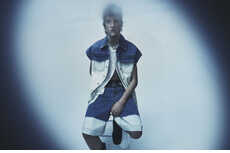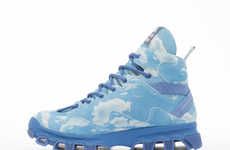
The Dries Van Noten Spring/Summer Line Sparks 30s Influences
Malika Renee Butss — October 5, 2015 — Fashion
References: vogue.it & harpersbazaar.au
The 1930s is the theme of the Dries Van Noten Spring/Summer '16 collection. This season, the Belgian designer gave a notable retro style high shine and glamorous decal.
The silhouette of this collection is fluid yet relaxed, which makes for clean shapes that are both masculine and feminine. The Spring/Summer Dries Van Noten fan can dress in oversized blazers, wide -- as well as high-waisted -- trousers, paper bag skirts, loose outerwear and flounce dresses. The Dries Van Noten Spring/Summer '16 collection offers a variety of contrasting textures such as tulle paired with denim and tweed.
Sequin embroidery and the chromatic color palette are the highlight of this collection, as both fashion statements dance across slim 30s-style dresses, blouses and other garments.
The silhouette of this collection is fluid yet relaxed, which makes for clean shapes that are both masculine and feminine. The Spring/Summer Dries Van Noten fan can dress in oversized blazers, wide -- as well as high-waisted -- trousers, paper bag skirts, loose outerwear and flounce dresses. The Dries Van Noten Spring/Summer '16 collection offers a variety of contrasting textures such as tulle paired with denim and tweed.
Sequin embroidery and the chromatic color palette are the highlight of this collection, as both fashion statements dance across slim 30s-style dresses, blouses and other garments.
Trend Themes
1. Fluid Silhouettes - Designing for fluid yet relaxed silhouettes can disrupt traditional masculine and feminine shapes.
2. Chromatic Embroidery - Incorporating chromatic embroidery in fashion design can offer a unique and eye-catching element.
3. 1930s-inspired Fashion - Revisiting past fashion eras such as the 1930s can bring a refreshing and new take on traditional fashion styles.
Industry Implications
1. Fashion Design - Fashion designers can incorporate fluid silhouettes and chromatic embroidery in their designs to stand out in the competitive fashion industry.
2. Textile Manufacturing - Manufacturing textiles with unconventional materials like tulle and denim can provide innovative options for fashion designers.
3. Retail - Bringing back fashion trends from past eras like the 1930s can disrupt the retail industry by offering unique and nostalgic products.
2.1
Score
Popularity
Activity
Freshness























